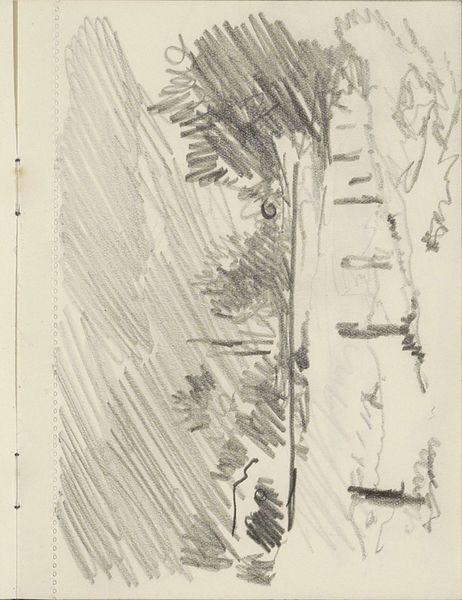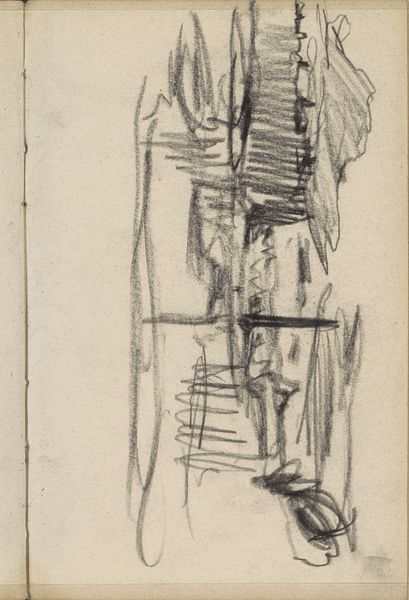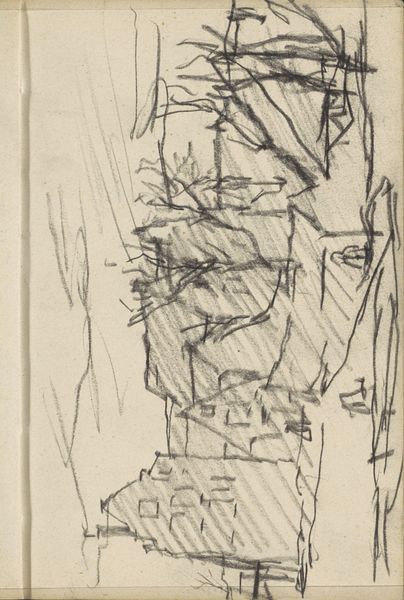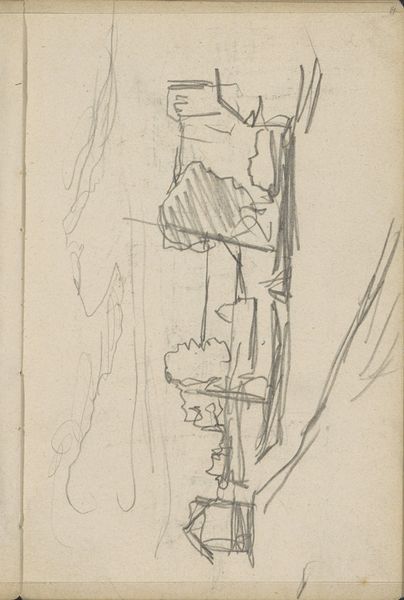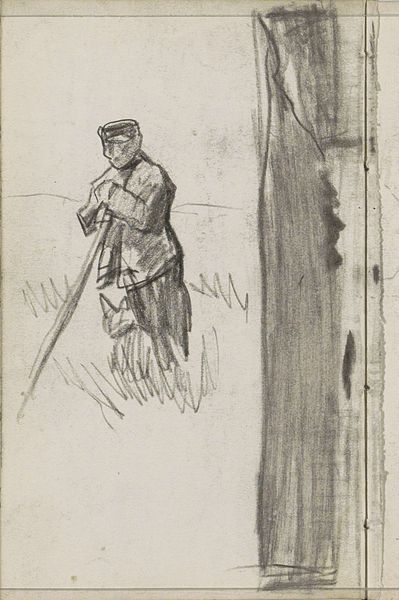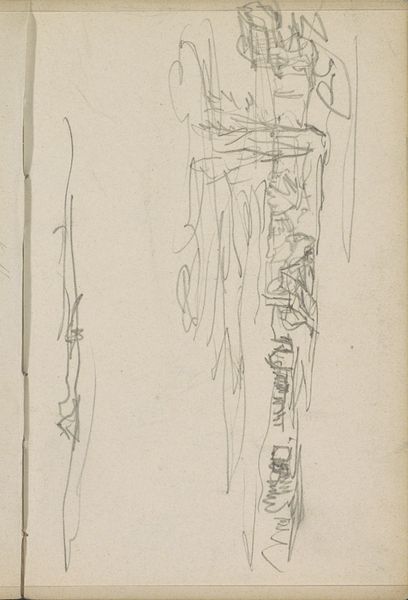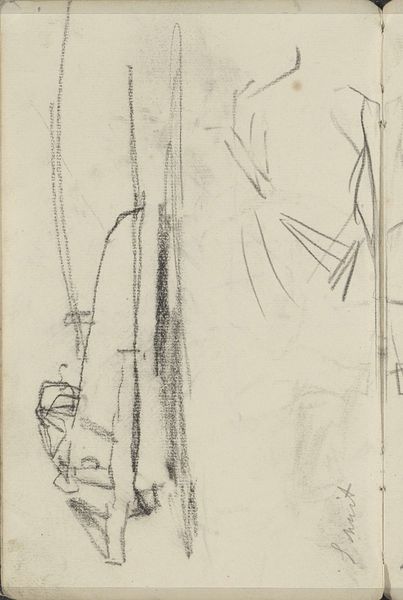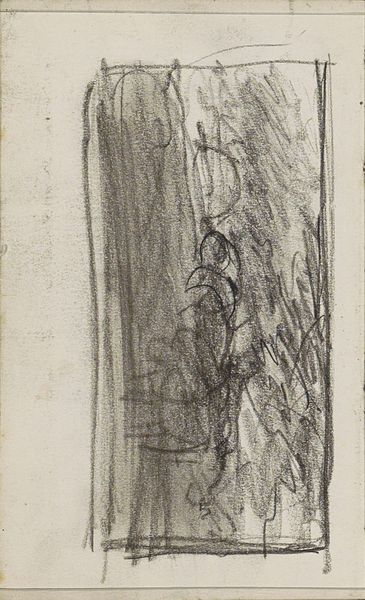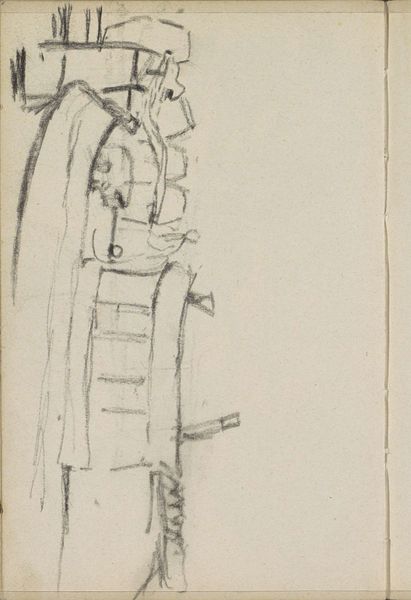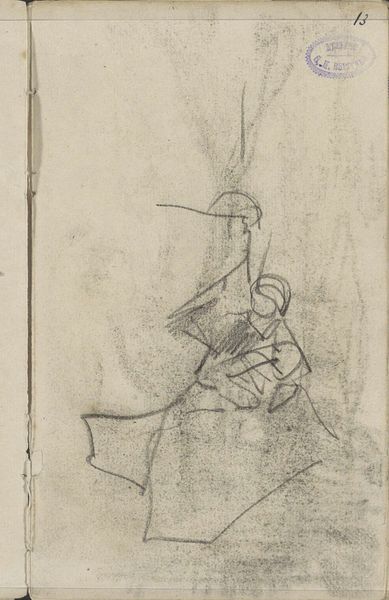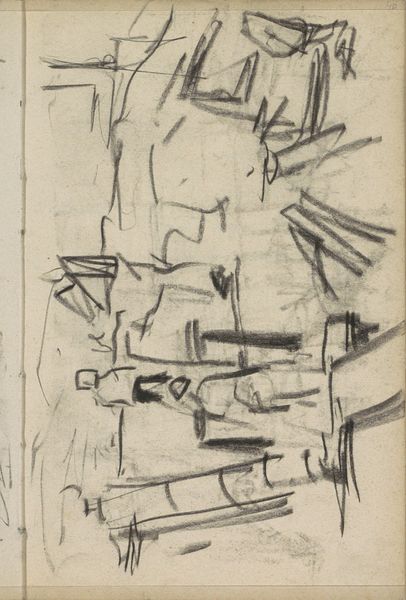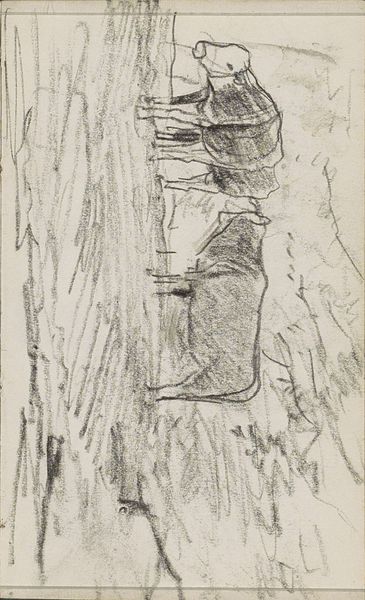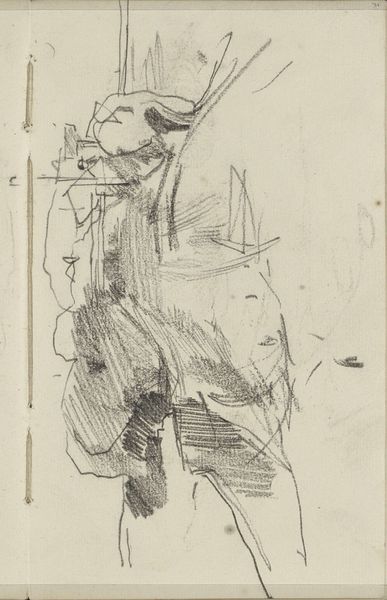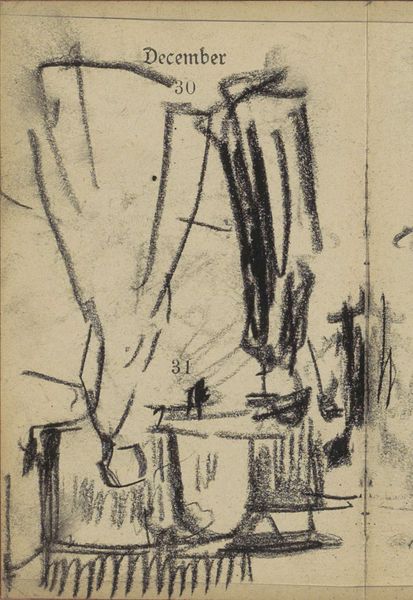
drawing, paper, pencil
#
drawing
#
pencil sketch
#
landscape
#
paper
#
pencil
#
realism
Copyright: Rijks Museum: Open Domain
Editor: We're looking at Anton Mauve's pencil drawing, "Twee koeien bij een hek in een weiland aan een waterkant," placing it somewhere between 1848 and 1888. It feels very sparse, almost fragmented. What do you see in the stark composition? Curator: The structural economy is striking. Observe how Mauve articulates form and depth through varying the pressure of the pencil. The diagonal strokes to the right, for instance, achieve an arboreal density that sharply contrasts with the lighter treatment of the figures on the left. Editor: The cows and fence almost feel like an afterthought given how dark and intense those lines are. Why place so much structural importance on what looks like trees? Curator: Consider, perhaps, that Mauve isn’t just depicting trees, but also playing with our perception. Notice the linear structure: vertical elements create a barrier to the horizontal plane. Semiotically, we read fence posts and tree trunks as signifiers of containment against nature's boundless quality, even if there are more defined contours and definition on one side. What kind of relationship do you see? Editor: I see it, a stark relationship. One so detailed that I wonder if Mauve considered it to be more important. This changes my understanding from it simply being a 'landscape'. Thank you. Curator: Precisely, and our attentiveness to structural and formal elements permits such revisions in our interpretative acts. I too benefited by the doubt you sowed in me.
Comments
No comments
Be the first to comment and join the conversation on the ultimate creative platform.
